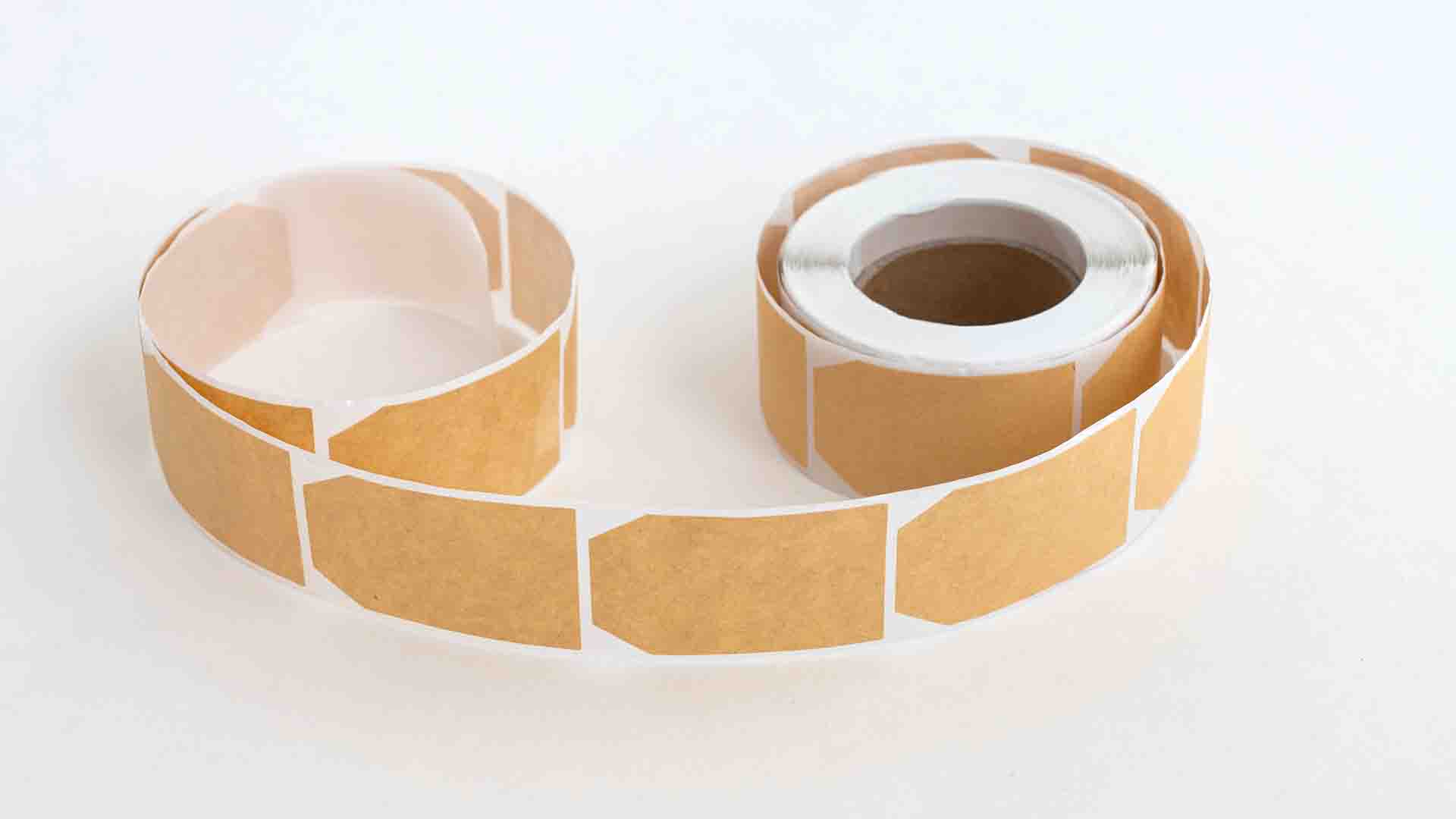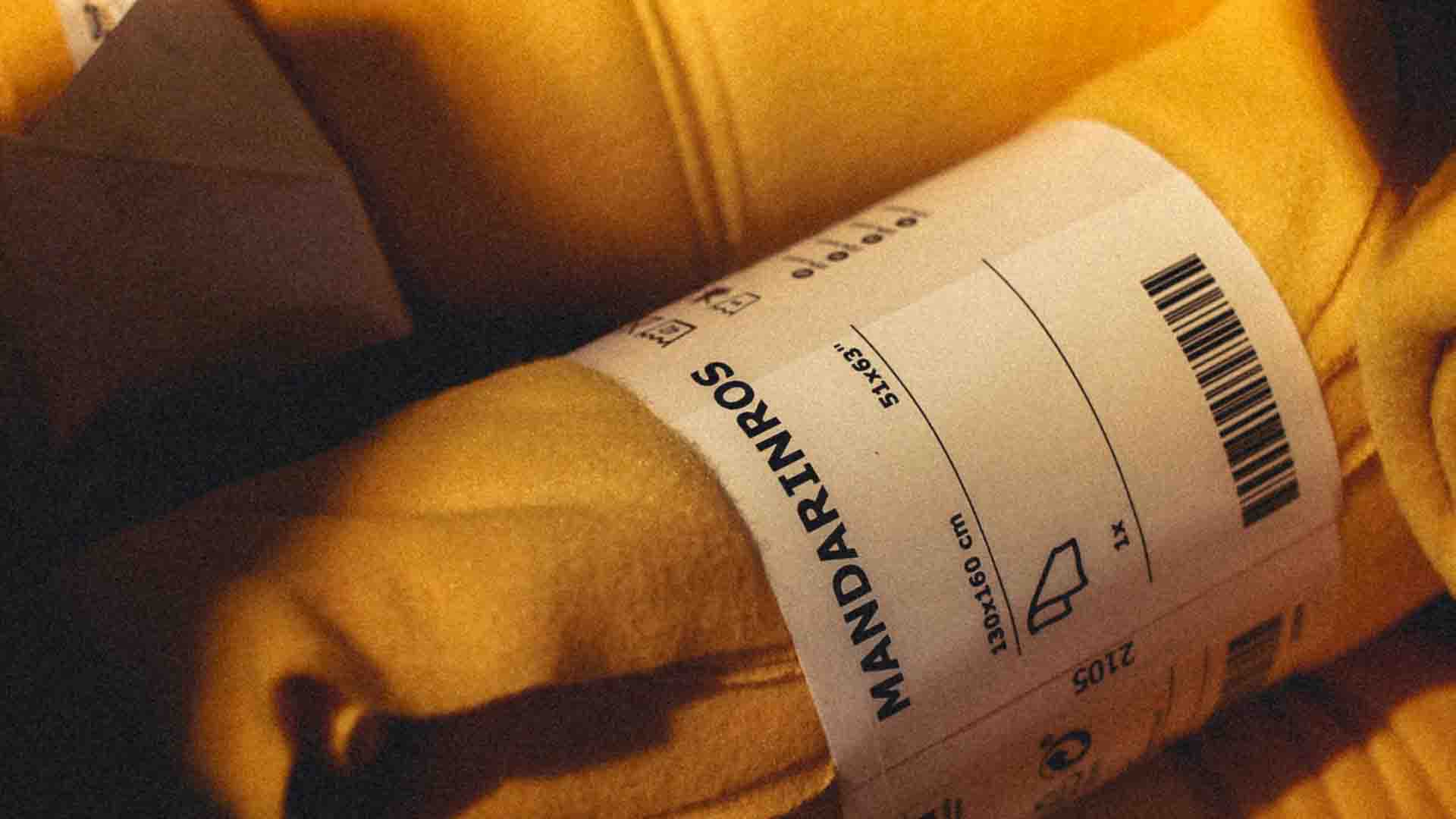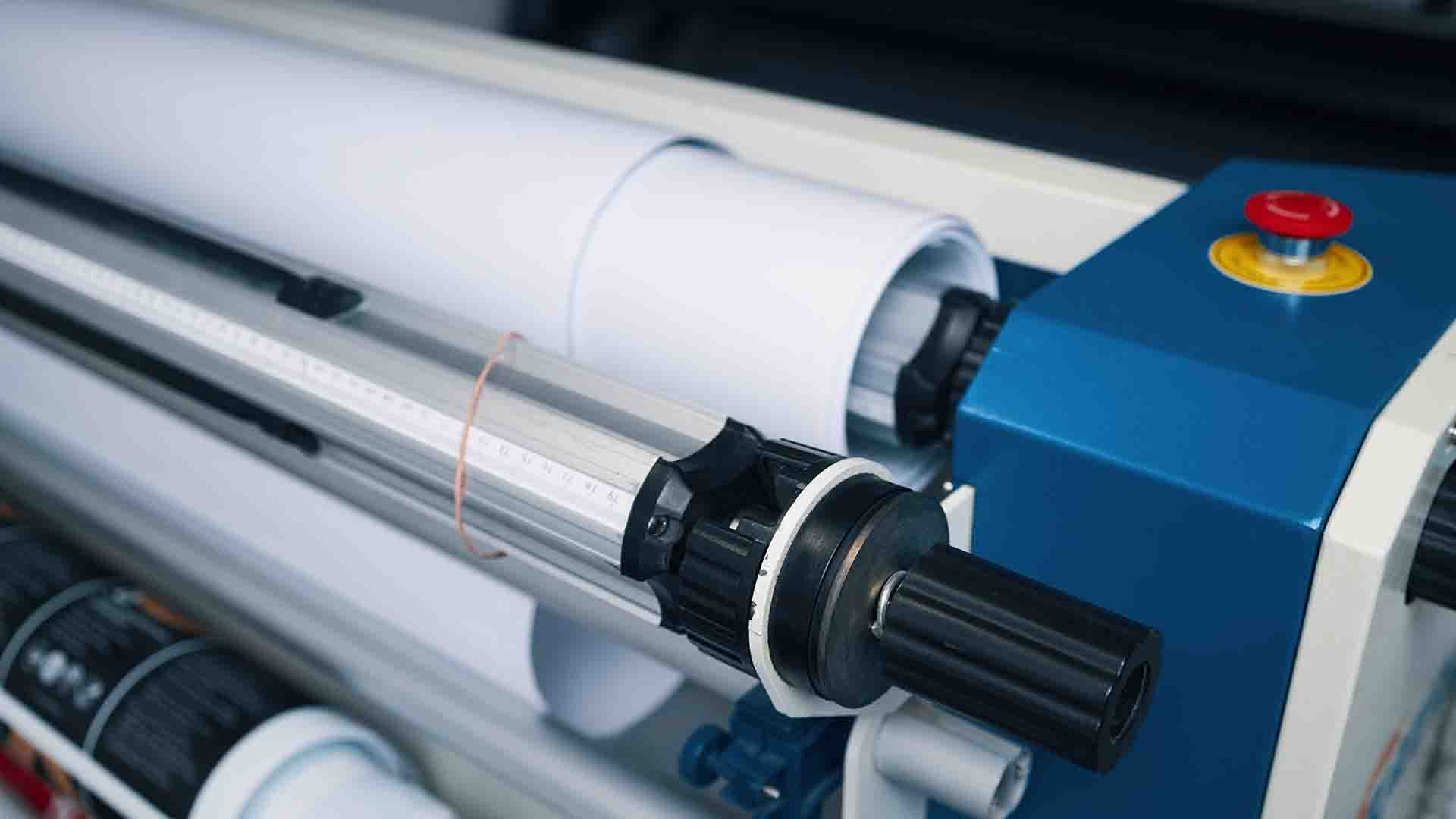

Roll labels are pre-cut or continuous ribbon labels on siliconised paper or PET backing, wrapped in rolls. This format is accepted by semi-automatic and automatic applicators, manual dispensers and office or industrial printers. The label blanks allow the labels to be fed continuously into the equipment without changing positions, so the line runs smoothly with minimal human intervention.
The main purpose of label blanks is to provide fast and reliable labelling where consistency and variable data are needed. In production, this includes batches, expiry dates, serial numbers, changing ingredients or language versions. In logistics, it’s shipments, SSCC, GS1-128 or QR codes, addresses and return information. Retail and e-commerce – prices, promotions, warehouse locations, return stickers. Reels are also suitable for pre-printing, where the bulk of the design is printed at the printer and variable content (date, batch, barcode) is applied on site.

The plus side of the label roll is productivity and automation readiness. Roll labels allow you to work at a constant pace as the machine picks up the next label itself, maintains a constant feed voltage and ensures a uniform application area. This results in fewer errors, less waste and on-demand printing eliminates the need for excess SKUs in storage. The reels make it easy to use variable data such as barcodes, QRs, batches, personalisation, which is especially important when integrating with WMS or ERP. In addition, the roll format has a lower unit cost than A4 sheets, as it does not require frequent printer “feed” cycles and reduces operator time.
Nes mes ne tik tiekiame įrangą ar siūlome sprendimus – mes kuriame vertę, kurią jaučia Jūsų verslas kiekviename žingsnyje.
UAB „Vygėja“ – tai patikimas partneris, kuriam rūpi ne tik rezultatas, bet ir Jūsų kelias link jo.
Ability to adapt label rolls to surface conditions
Another advantage is the variety of materials and adhesives available, allowing you to adapt precisely to the surface and conditions. Paper labels are suitable for dry environments and short-term use, thermal direct labels are ideal for short-lasting parcel labels without tape, while BOPP, PE or PET films are resistant to moisture, grease and scratching. Adhesives can be permanent, peel-off, deep-freeze, heat-resistant or designed for small-diameter bottles to prevent the edges from lifting off.
Technical parameters of the label roll
The diameter of the kernel is the diameter of the inner tube of the roll on which the label tape is wound. Outer diameter (OD) is the total diameter of the roll through its outside. These two parameters determine whether the roll will physically fit into the printer, how stable the label feed will be, and how many labels you can fit on one roll before the next change.
The most common core sizes are 25 mm, 40 mm and 76 mm. Most desktop thermal or thermal transfer printers use 25 or 40 mm cores and have a compact material chamber. Industrial printers are usually designed for a 76 mm core, have a more massive axis and a more robust feed, allowing them to handle heavier, larger diameter rolls without slipping or feed unevenness.

The maximum outer diameter of the label blank is usually limited by the printer body itself. The “ceiling” for desktop models is usually around 127 mm OD, while for industrial models it is around 203 mm OD. This means in practice that a desktop printer will accept a much shorter roll and will need to be changed more often, whereas an industrial printer will accept a large roll, allow longer non-stop operation and maintain a more stable voltage in faster modes. If you are using desktop printers, order rolls on a 25 or 40 mm core and do not exceed an outer diameter of about 127 mm, otherwise the roll will simply not fit. If you have an industrial printer, go for a 76 mm core and up to around 203 mm OD – this will accommodate more labels and reduce the number of changes.
Personalisation options
Personalisation and variable data, abbreviated as VDP, means that you have one label design as a template and each label is printed with its own unique content. This could be a name, a personalised message, a serial number, a QR code or an expiry date. In practice, there are two convenient routes: the printer produces a full-colour pre-print roll, and you just apply the variable data in production with a thermal or thermal transfer printer; or all the personalisation is done digitally in one pass, with the content changing every label.
Personalised messages work best when you want to distinguish a customer or segment. One customer sees their name on the packaging, another is automatically matched with the language of their choice, and a third is assigned a unique offer or discount code. For this purpose, “fields” are defined in the template and the content is loaded from a data source ranging from a simple CSV to a direct connection to your ERP or e-shop. To keep the image neat, it’s worth limiting the length of the text, using a clear font according to the resolution of your printer, and anticipating how to deal with Lithuanian letters and different layout variations.
Choice of serial numbers
Serial numbers and bar or two-dimensional codes provide traceability, anti-counterfeiting and fast storage logic. The numbering can be sequential or random, the key is unambiguity and connection to the system. For barcodes, Code 128 or GS1-128 for logistics, EAN for retail, and Data Matrix or QR for more data or web links are the most common choices.
Double-sided and transparent label
A double-sided printed label helps when you have a lot of information and not much space, or when you want to display the content through a transparent container. One option is reverse printing, where part of the text is visible through the bottle or container, in which case a white layer is important to prevent overlapping of images and a clear, non-yellowing adhesive is essential. Another option is a booklet-type label with a flap, which can accommodate multi-language instructions, formulations and legal information without sacrificing the front design.
Which printing technique to choose?
The choice of technique depends on the objective. If you want to quickly and reliably apply dates, batches, numbers and codes in production, thermal transfer with the right ribbon on the right material is the workhorse, resistant to abrasion, UV and chemicals. If you want colour personalisations, photos or variable visuals, digital printing at the printer will allow you to change the content from label to label without reprinting the forms, and you only add dates or logistics codes in production. For small labels with a lot of information, it is worth choosing a higher print resolution; for large labels with large codes, a lower one is sufficient.
Antimicrobial labels – the choice for the food and cosmetics industry
Antimicrobial labels are labels with a normal appearance but with a special surface and an active additive in the top layer. It inhibits the growth of bacteria on the surface of the label itself, so it stays cleaner longer, doesn’t take on unpleasant odours and looks better over the life of the product. It is not a “hygiene miracle”, but a sensible addition where the label is constantly touched by hand or stored in wet areas.
For cosmetics, this is especially true on bottles, pumps, shower products and testers in shops or beauty salons. For food, it is recommended for use on outer packaging, labels where the surface is touched during storage, handling or in the shop. Such labels help to maintain the neat appearance of the products when the surfaces of the containers are continuously picked up, placed and picked up again.
How does it work?
The active additive is added to the varnish or film during production, so it does not wash off and does not act as a temporary spray. Silver or other mineral complexes are commonly used, which create an unfavourable environment for bacterial growth. The effect is focused on the surface of the label itself and not on the environment or the content on the label.
If communication is important to you
For the brand, it’s a convenient social responsibility message. The packaging can be subtly labelled “Antimicrobial Surface” and a QR link can be added to a page that briefly explains the technology, its limits and maintenance. Such communication shows concern for the user experience and hygiene, especially in categories where products are kept in the bath, in the gym bag or used in public spaces on a daily basis.
When installing a solution, we choose the right material and adhesive for the conditions. For cosmetics, we often choose BOPP or PE films with moisture-resistant adhesives because the surfaces will be wet or greasy. For external food labels, we select materials aligned with the requirements for food, and we do not plan for direct contact with food – only dedicated material solutions should be on the surface of food. For visual purposes, it is possible to choose a matt or glossy surface, varnish the areas where the most frequent contact is made, and leave the text clearly legible even after prolonged use.
If you want to use such labels, it’s easy to get started. We decide which SKUs are most likely to touch the surface of the label; we agree on the message and wording; we choose the material and the antimicrobial topcoat; we produce a test batch and test it in real life – after a few weeks, the label is still clean, the text is readable and the surface is clean. We can then move on to mass production and prepare a short information page on your website so that your customers understand what the ‘antimicrobial surface’ label means.
